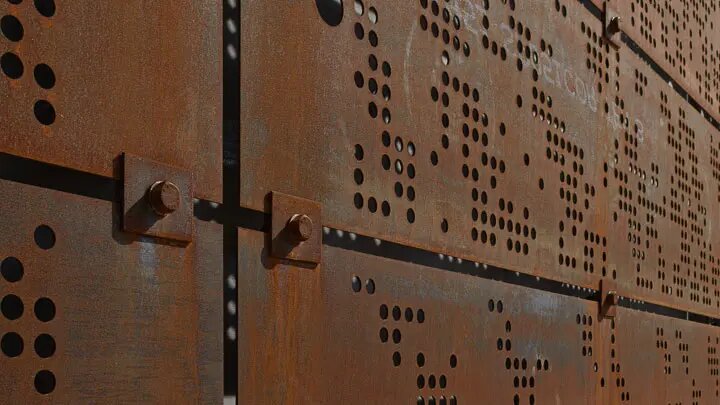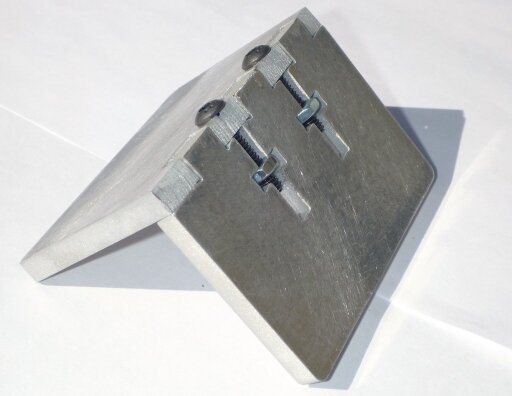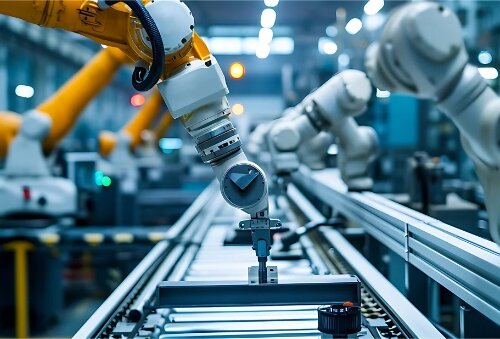Are you struggling to find the right method to create aluminum prototypes? Selecting the best technique can be challenging and waste time and money, especially when deadlines are tight. Many engineers face issues with quality, cost, and delivery time when making aluminum parts for their projects.
Aluminum prototyping requires specific techniques for best results. The five primary methods are CNC machining, sheet metal fabrication, die casting, 3D printing, and extrusion. Each method has unique benefits and limitations depending on your project needs, volume requirements, and budget constraints.
Want to ensure that you pick the right method for your next project? Let’s examine each technique in detail so you can make a better choice.
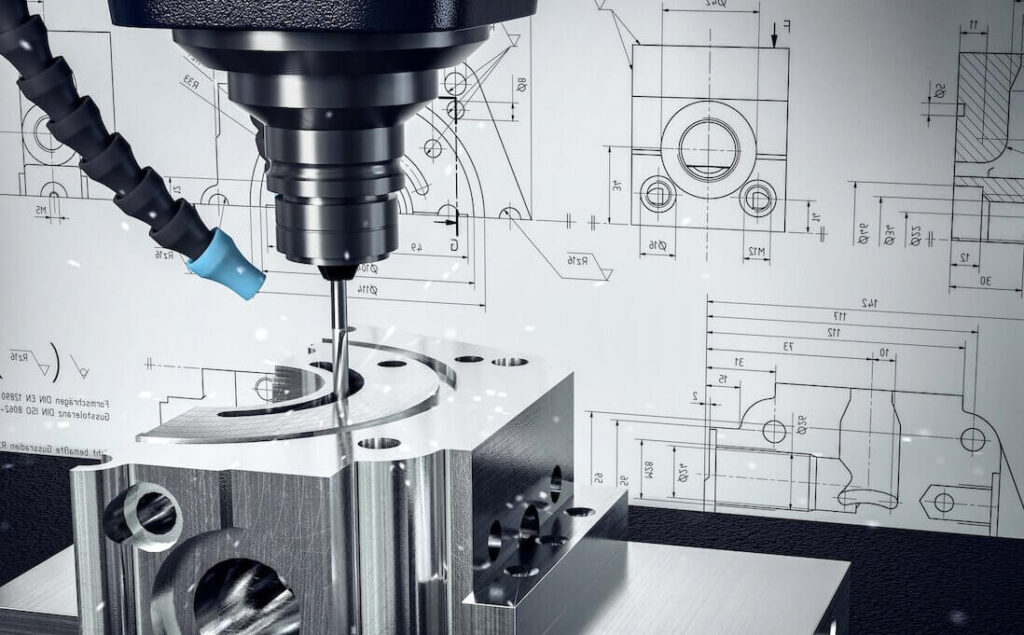
Common Aluminum Alloys Suitable for Prototyping
Choosing the right aluminum alloy is crucial for prototyping. Different alloys offer unique properties like strength, corrosion resistance, and machinability. Look at five common aluminum alloys used in prototyping and their key features.
Aluminum 3003: Versatile and Easy to Work With
Aluminum 3003 is one of the most widely used alloys. It’s known for its excellent formability and corrosion resistance. This makes it ideal for sheet metal fabrication and welding.
It’s not as strong as some other alloys, but it’s perfect for prototypes that need to be lightweight and durable. Typical applications include tanks, cabinets, and decorative parts.
Aluminum 6061: The Go-To Alloy for Machining
Aluminum 6061 is a favorite for CNC machining. It offers an outstanding balance of strength, weldability, and corrosion resistance. This alloy is also heat-treatable, which enhances its mechanical properties.
It’s commonly used for structural components, frames, and parts that require high precision. If your prototype needs to be strong and easy to machine, 6061 is a solid choice.
Aluminum 7075: High Strength for Demanding Applications
Aluminum 7075 is one of the strongest aluminum alloys available. Due to its high strength-to-weight ratio, it’s often used in aerospace and military applications. However, it’s less corrosion-resistant than other alloys.
This alloy is ideal for prototypes that need to withstand heavy loads or stress. However, 7075 is harder to machine and weld than 6061.
Aluminum 6063: Excellent for Extrusion
Aluminum 6063 is known for its smooth surface finish and excellent extrudability. It’s commonly used for architectural profiles, frames, and decorative parts. This alloy is also corrosion-resistant and easy to anodize.
If your prototype involves extrusion or requires a polished appearance, 6063 is a great option. It’s not as strong as 6061 or 7075, but it’s perfect for lightweight, aesthetic-focused designs.
Aluminum 5052: Strong and Corrosion-Resistant
Aluminum 5052 is highly resistant to corrosion, especially in marine environments. It’s also strong and easy to form, making it suitable for sheet metal fabrication and welding.
This alloy is often used for prototypes that need to perform in harsh conditions, such as marine hardware or outdoor enclosures. It’s not heat-treatable, but its natural strength and durability make it a reliable choice.
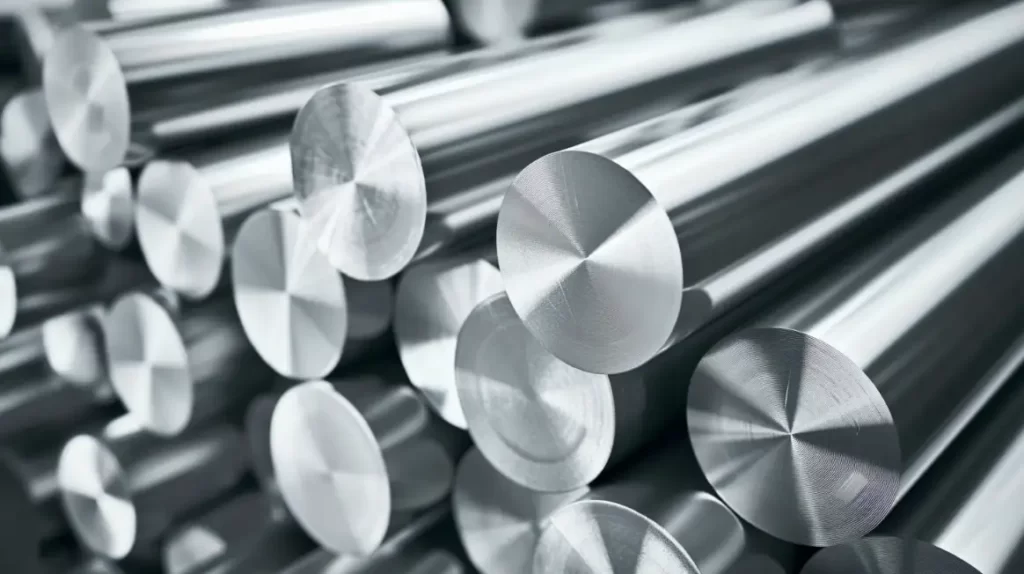
Method 1: CNC Machining
CNC machining stands as the most common method for creating aluminum prototypes. This process uses computer-controlled mills and lathes to remove material from solid aluminum blocks until the desired shape emerges.
The CNC process starts with programming. Engineers create a 3D model and convert it to G-code that guides the cutting tools. The machine then follows these instructions to cut away material with extreme precision.
Pros:
- High Precision: CNC machines can achieve tight tolerances, often within ±0.001 inches.
- Versatility: CNC machining works with many aluminum alloys. It can handle complex geometries and detailed designs.
- Speed: Once set up, CNC machines produce parts quickly.
- Surface Finish: CNC machining delivers smooth finishes. This reduces the need for additional polishing or finishing.
Cons:
- Cost: CNC machining can be expensive for one-off prototypes. The cost includes machine setup and material waste.
- Design Limits: Some designs, like deep pockets or sharp corners, can be hard to machine.
When to Choose CNC for Aluminum?
CNC machining is a great choice when:
- You Need Precision: CNC machining is ideal if your prototype requires tight tolerances or fine details.
- Your Design is Complex: CNC machines can handle intricate shapes and geometries that other methods can’t.
- You Need Functional Prototypes: CNC-machined parts are strong and durable. They’re perfect for testing how a part will perform in real-world conditions.
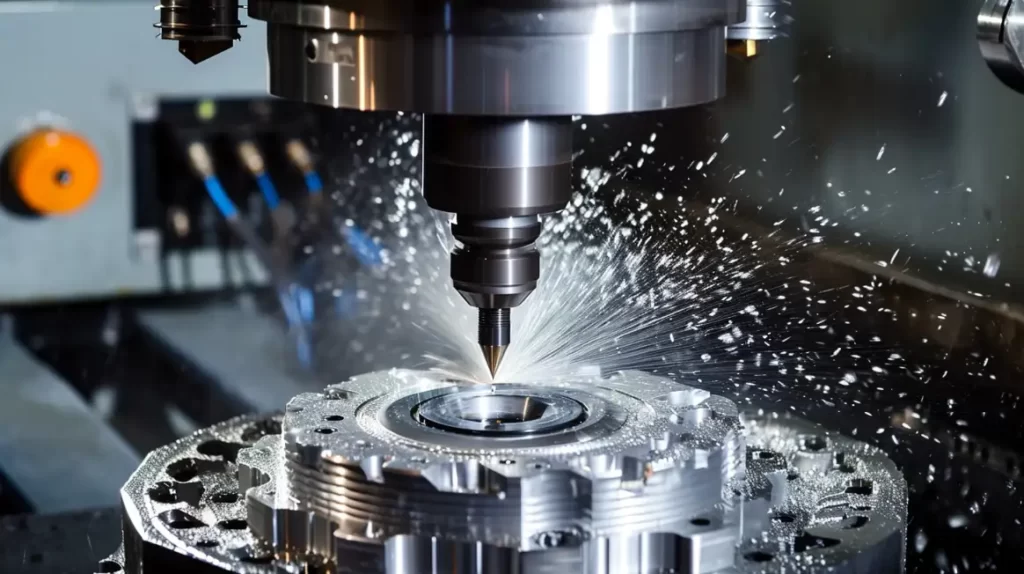
Method 2: 3D Printing
3D printing builds aluminum parts layer by layer directly from digital designs. The process starts with a 3D digital model of the part, which is sliced into thin layers by software.
The 3D printer uses a laser or electron beam to melt powdered aluminum. It follows the sliced model to create each layer, fusing them to form the final part. This method allows for complex geometries that are hard to achieve with traditional manufacturing.
Pros:
- Design Freedom: 3D printing can create intricate shapes and internal structures.
- Speed: 3D printing is fast for one-off prototypes. There’s no need for tooling or setup so you can go from design to part quickly.
- Material Efficiency: Unlike CNC machining, 3D printing adds material only where needed.
Cons:
- Strength Limitations: 3D-printed parts may not be as strong as those made with CNC machining.
- Surface Finish: 3D-printed parts often have a rough surface. They may require additional finishing to achieve a smooth look.
- Cost for Large Volumes: While cost-effective for small runs, 3D printing can be expensive for large quantities.
When to Choose 3D Printing?
3D printing is a great choice when:
- You Need Complex Designs: If your prototype has intricate shapes or internal features, 3D printing can handle it.
- Speed is Critical: For quick turnaround times, 3D printing is ideal. It’s perfect for testing concepts or making design adjustments.
- You’re Making One-Off Prototypes: 3D printing is cost-effective for single parts or small batches.
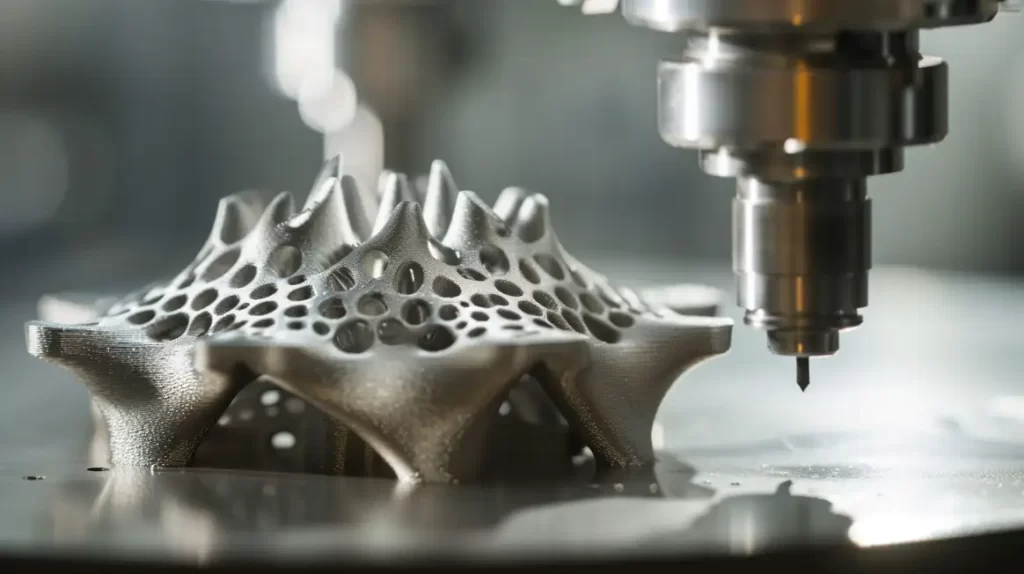
Method 3: Die Casting
Die casting involves forcing molten aluminum into a steel mold, called a die, under high pressure. The process starts with heating aluminum until it becomes liquid. The molten aluminum is then injected into the die at high speed.
Once the aluminum fills the mold, it cools and solidifies quickly. The die opens, and the part is ejected. The result is a precise, detailed part with a smooth surface finish. Dies can be reused to produce many identical parts.
Pros:
- High Precision: Die casting produces parts with tight tolerances and fine details.
- Excellent Surface Finish: Parts come out of the die with smooth surfaces.
- High Production Speed: Once the die is made, parts can be produced quickly.
- Strength and Durability: Die-cast parts are strong and durable. They can handle stress and wear, making them suitable for functional prototypes.
Cons:
- High Initial Cost: Creating the die is expensive.
- Design Limitations: Die casting works best for parts with uniform wall thickness. Complex designs may require multiple dies or additional machining.
When to Choose Die Casting?
Die casting is a great choice when:
- You Need High Volume: Die casting is cost-effective if you plan to produce many identical parts.
- Precision and Detail Matter: Die casting is ideal for prototypes that need fine details and tight tolerances.
- Surface Finish is Important: Die casting delivers if your prototype needs a smooth finish right out of the mold.
- Strength is Critical: Die-cast parts are strong and durable. They’re perfect for functional prototypes that need to withstand stress.

Method 4: Sheet Metal Fabrication
Sheet metal fabrication is a versatile and cost-effective method for creating aluminum prototypes. These sheets are cut into the desired shape using tools like lasers, shears, or punches. The cut pieces are then bent or formed into the required shape using press brakes or rollers.
Additional processes like welding, riveting, or fastening may be used to assemble multiple pieces. The final step often includes finishing processes like powder coating or anodizing to improve appearance and durability.
Pros:
- Cost-Effective: Sheet metal fabrication is affordable for prototypes and large production runs.
- Lightweight and Durable: Aluminum sheet metal parts are strong yet lightweight.
- Fast Turnaround: Simple designs can be fabricated quickly.
- Scalability: Sheet metal fabrication works well for both small and large quantities. It’s easy to scale up production as needed.
Cons:
- Design Limitations: Complex shapes may require additional processes or assembly.
- Material Thickness: The thickness of the aluminum sheet can limit design options.
- Surface Finish: While functional, sheet metal parts may require additional finishing to achieve a polished look.
When to Choose Sheet Metal Fabrication?
Sheet metal fabrication is a great choice when:
- You Need Lightweight Parts: Aluminum sheet metal is perfect for applications where weight is a concern, like enclosures or brackets.
- Cost is a Priority: If you need a cost-effective solution for prototypes or production, sheet metal fabrication is ideal.
- You’re Working with Flat or Simple Shapes: Sheet metal fabrication excels at creating flat or slightly curved parts. It’s less suited for highly complex geometries.
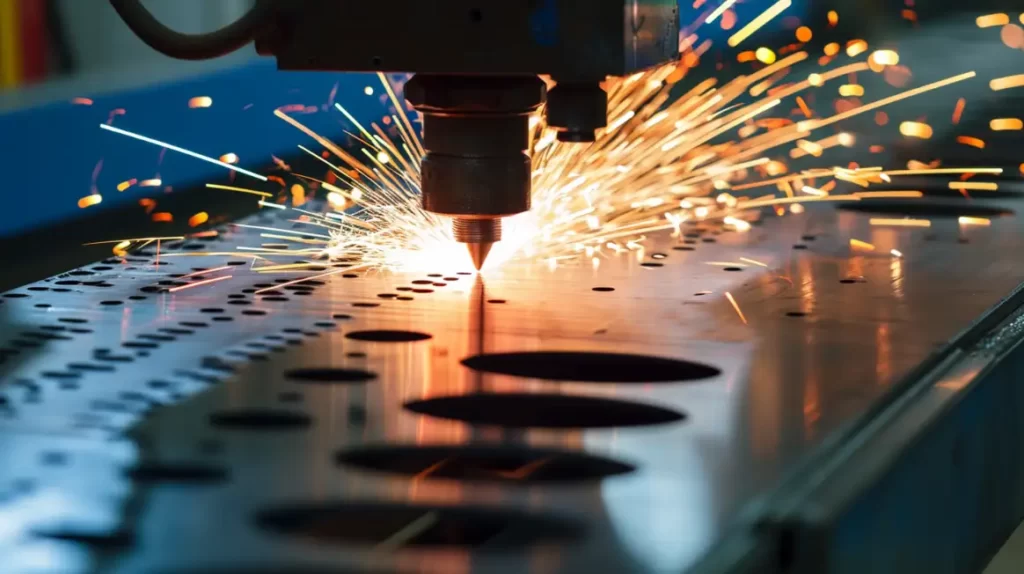
Method 5: Aluminum Extrusion
Aluminum extrusion is a popular method for shaping aluminum into specific profiles. It involves forcing heated aluminum through a mold to create long, continuous shapes.
In the aluminum extrusion process, a billet of aluminum is heated to a high temperature until it becomes soft. The softened aluminum is then pushed through a die using a hydraulic press. The shape of the die determines the profile of the final product.
Pros:
- Cost-effective for large runs: Aluminum extrusion is efficient and low-cost for large quantities once the die is created.
- Variety of shapes: It can produce a wide range of complex shapes with high precision.
- Lightweight and durable: The extruded aluminum is strong and lightweight, making it ideal for many applications.
- Good surface finish: The process creates a smooth, clean surface that is easy to anodize or paint.
Cons:
- High initial setup costs: Creating custom dies can be expensive, which may not be ideal for small batch runs.
- Limited to specific shapes: While aluminum extrusion offers many shape options, it’s unsuitable for every design.
- Can be slow for prototypes: While efficient for mass production, it can be slower than other methods for small quantities or rapid prototyping.
When to Choose Aluminum Extrusion?
Aluminum extrusion is an excellent choice when:
- You Need High-Volume Production: Aluminum extrusion is perfect for large-scale production, offering consistent quality and fast turnaround times at a competitive cost.
- You’re Making Parts with Complex Shapes: If your design involves complex profiles or cross-sections, aluminum extrusion can easily accommodate these with high precision.
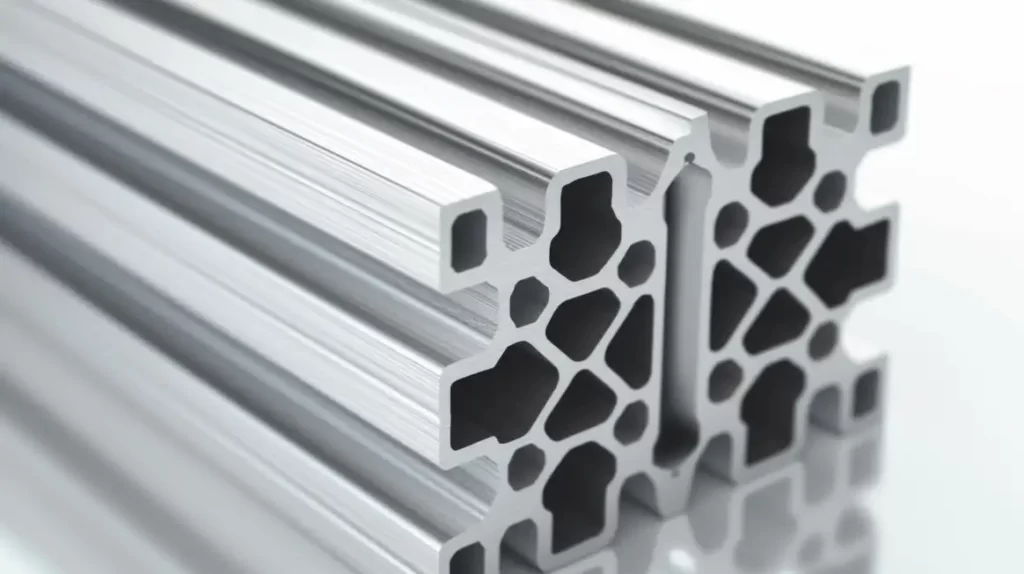
Advantages of Aluminum Prototypes
Aluminum is a popular choice for prototyping due to its strength, lightweight properties, and versatility. Here are some of the main advantages of using aluminum for prototypes.
Superior Functional Performance
Aluminum is known for its strong performance in a wide range of applications. It provides an outstanding balance of strength and weight, making it ideal for prototypes that need to be durable without being overly heavy.
Excellent Thermal Properties
Aluminum is an excellent conductor of heat, making it perfect for applications that require efficient heat dissipation. Prototypes, such as heat sinks or cooling fins, benefit from aluminum’s ability to transfer heat away from critical components quickly.
Surface Finish Options
Aluminum can be easily treated to achieve a variety of surface finishes. Whether you need a smooth, polished look or a textured surface for better grip, aluminum can be anodized, painted, or coated to meet your requirements.
Cost-Effective
While aluminum may not always be the cheapest material upfront, its cost-effectiveness becomes apparent over time. Aluminum is widely available and easy to work with, which helps reduce production costs, especially for larger batches.
High Accuracy
Aluminum can be machined to very tight tolerances, offering high accuracy for prototypes. This is especially important when precision is required for functional testing or final production.
Choosing the Right Method for Your Project
Several factors need to be considered when deciding on the best manufacturing method for your project. Let’s go over the key things you should consider when choosing.
Material Quality
The material quality you need plays a significant role in choosing the correct method. Some methods can provide better finishes or more substantial materials, while others may not offer the same level of quality. Consider whether your prototype must handle stress, heat, or corrosion.
Production Speed
Another key factor is how fast you need your prototype or final product. Some methods, like 3D printing, are quick for small batches. Other methods, like aluminum extrusion, may take longer but work better for larger quantities.
Design Complexity
The complexity of your design is essential. If your design has many small details, methods like CNC machining or 3D printing may better suit you. For simpler designs, methods like die casting or extrusion may be more cost-effective and efficient for mass production.
Quantity Needed
How many parts do you need? The number of units will affect the method you choose. Methods like 3D printing or CNC machining work best for small quantities or one-off prototypes. Methods like die casting or aluminum extrusion are more cost-effective for larger quantities.
Budget Considerations
Your budget will influence your choice of method. Some methods, like 3D printing, are affordable for small runs but may get expensive for large quantities. Other methods (e.g., die casting) may have higher initial costs due to the need to make molds.
Conclusion
Aluminum is a versatile material for prototyping. It offers a strong yet lightweight solution, making it ideal for many projects. The choice of method will depend on your design, production speed, and budget. By selecting the best method, you can achieve a high-quality prototype that suits your project.
Contact us if you’re ready to start your aluminum prototype or need help choosing the correct method. Our team is here to guide you through the process and ensure the best results for your project. Contact us today to get started!
Hey, I'm Kevin Lee

For the past 10 years, I’ve been immersed in various forms of sheet metal fabrication, sharing cool insights here from my experiences across diverse workshops.
Get in touch

Kevin Lee
I have over ten years of professional experience in sheet metal fabrication, specializing in laser cutting, bending, welding, and surface treatment techniques. As the Technical Director at Shengen, I am committed to solving complex manufacturing challenges and driving innovation and quality in each project.

